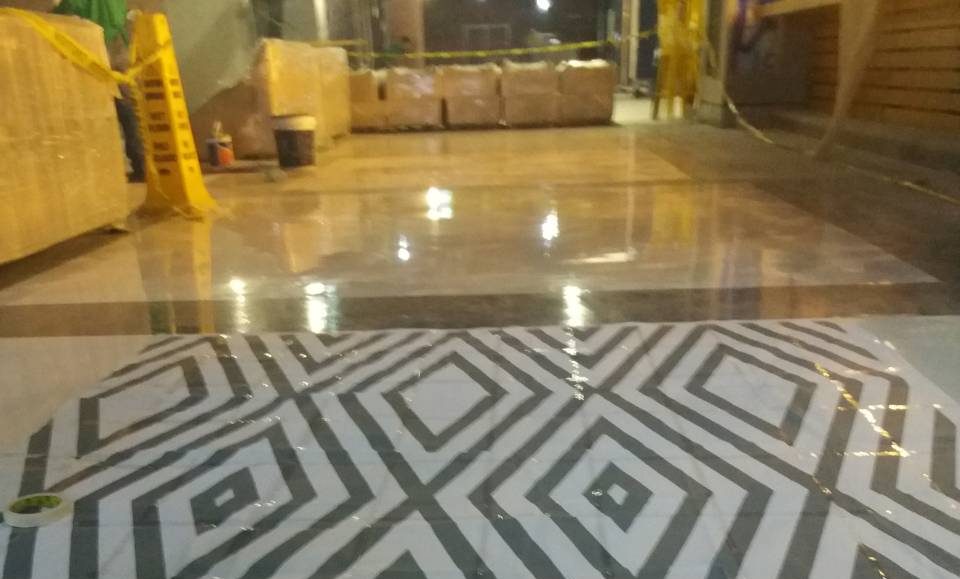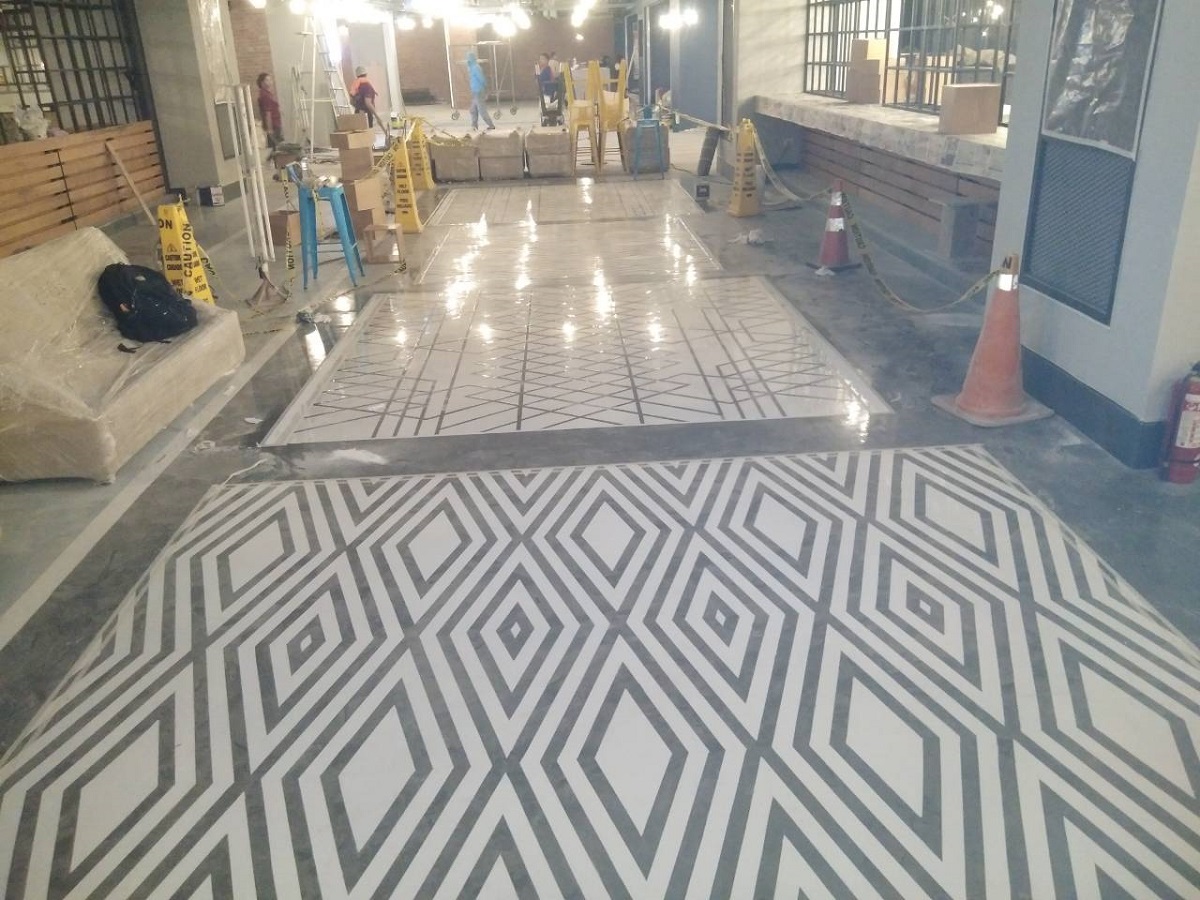There’s more than a handful of things to know about resins and epoxy coating. In the Philippines, many use epoxies as adhesives, structural support, and as flooring solutions.
Its vast array of characteristics and types make it one of the most interesting compounds commonly used by people. Here’s an in-depth look into resins and epoxy coatings:
Brief History

Epoxy coating is one of the most widely used flooring options or flooring coating in the world. It has served millions of people across the globe for over 100 years. What made it a top choice for users all over the world is its unparalleled strength, durability, and sustainability. You may even see people with DIY residential garage epoxy coating in the Philippines.
The 1930s
The synthesis of epoxy compounds can be traced back in the early 1890s. In 1909, Nikolai Alexandrovich Prilezhaev, a Russian organic chemist, was first to observe the reaction between alkene with a peroxy acid. This chemical reaction resulted in the formation of epoxides. This reaction is known as the Prilezhaev reaction or Prilezhaev epoxidation. These epoxides are used to form epoxy with polyamine.
1930s to 1950s
The success of synthesizing epoxy was accomplished in 1936. This was done by Swiss chemist, Dr. Pierre Castan and American Chemist Dr. S.O. Greenlee. They were able to do this by producing a bisphenol-A based epoxy resin by a reaction with epichlorohydrin and later prepared a thermoset composition after the reaction of the resin with phthalic anhydride. The potential of this early adaptation of hardened resin attracted the dental industry. But early attempts to market the resin for dental products were futile.
Both chemists would constantly apply for patents for their creations and later shared the success of developing diglycidyl ether of Bisphenol A. Dr. Pierre Castan was very well known for the development of epoxy adhesives and varnishes. In the 1940s, Castan developed his epoxy resins even further and acquired several patents for a variety of uses and a range of different variants.
It wasn’t until 1943 when the patents of Dr. Pierre Castan were licensed to a chemical company in Switzerland called Ciba. Then in 1946, the first epoxy adhesive was presented to the public at the Swiss Industries Fair. It was in the same year when Ciba put epoxy resin into commercial production. They are the first company in the world to do so.
After World War II, Dr. S.O. Greenlee and his colleagues patented a series of epoxy resin compositions including resins and resin esters for chemical company, DeVoe and Raynolds. On the other hand, Ciba increased their development of epoxy resins for laminating, casting, and a variety of adhesive applications.
1950s to 1970s
One of the first industries to make use of this epoxy was aerospace. They were the easiest commercial field that epoxies could introduce themselves and gain exposure during the 1950s. It was difficult for epoxy to get into the hands of the public as many doubted this new technology.
Later on in the 1950s, the use of epoxy slowly made its way from aerospace to building construction, then to the woodworking industry. Mainly used as a structural adhesive, epoxies were best known for their varying characteristics. They can be made flexible or firm, opaque or transparent, and even the rate at which they set can vary as well.
Epoxies have become widely used in construction and aerospace due to their ability to resist more heat and intense chemical resistance compared to other adhesives on the market. Which is why epoxies are used as a structural matrix material which will, later on, be reinforced with other materials such as fiber, for the application of aerospace construction.
1970s to Present Day
Epoxy has made its way to residential applications and as a flooring option for commercial parking lots. Many love using epoxy has a flooring material due to its longevity, ease of clean, and scratch-proof surface. Many epoxy flooring solutions and epoxy coating in the Philippines are available in the market.
Epoxy has come a long way from the desks of chemists to the floor of our own homes. Major innovations of this wonderful compound have aided the rise of epoxy as a global product. With dozens of breakthroughs and over a century of development, epoxy is one of the world’s best and most used compounds. Everywhere you go, most likely, there’s an epoxy-treated product near you.
Difference Between Epoxy Flooring and Epoxy Coating

Epoxy flooring solutions are widely used in homes and commercial structures in many countries such as Malaysia, Singapore, and the Philippines. Though epoxy flooring and epoxy coating are terms where confusion usually come up. Many think that an epoxy floor coat and epoxy floor and one and the same, but in fact, the two are totally different.
An epoxy flooring is defined as a flooring surface which is comprised of multiple layers of epoxy that is applied to a floor. These layers should have a depth of at least two millimeters. On the other hand, an epoxy coating refers to a floor that has been treated with epoxy and has a surface level of no more than two millimeters.
It’s very basic. Though both are considered as an epoxy coating, the difference solely lies on the thickness of the epoxy solution. Now that we’ve discussed the differences between epoxy flooring and epoxy coating, we can move on to the different advantages and types of epoxy floor coatings.
Advantages of Epoxy Coating

You may notice that many parking lots and even residential homes in the Philippines make use of epoxy coating. Its popularity is due to the range of advantages. Epoxies are known for their durability, brightness, strength, ease of installation, low maintenance, aesthetic appeal, chemical resistance, and potentially environmental-friendliness.
Its durability helps many users save money as concrete floors coated with epoxy will extend the floor’s longevity and increase its wear resistance. In return, you no longer have to worry about constantly having to think about the costs of constant repairs.
The brightness of epoxy coatings usually come with gloss coat options. These help improve the lighting of a certain room by use of reflection.
Its strength only really comes in once the epoxy coating has been converted to a solid polymer with the help of a resin. Once at this solid state, the coating becomes extremely strong. It cannot be uncured and will prevent any chemical breakdown.
Ease of installation is one of the main reasons why many choose to coat their floors with epoxy coating. In the Philippines, many businesses choose to use epoxies as a flooring solution due to the fact that it helps save them time and money. They wouldn’t have to temporarily close their business in order to accomplish coating their floors.
Epoxy coatings are known to be low maintenance. Since the coated floor is no longer porous, cleaning them would be easier. You also don’t have to worry much about floor damages due to the incredible strength of the epoxy.
Epoxy coatings come in many different types and styles. You won’t run out of epoxy applications when it comes to incorporating style and the type of epoxy coating. They are widely available in a vast array of colors and patterns.
Its chemical resistance makes epoxy coating perfect for use in plants, laboratories, and warehouses. Even the harshest of chemical contact will not affect or damage epoxy coated floors. Their strength not only resists physical abuse but chemical exposure as well.
Epoxy coatings are known to be low maintenance. Since the coated floor is no longer porous, cleaning them would be easier. You also don’t have to worry much about floor damages due to the incredible strength of the epoxy.
Epoxy coatings come in many different types and styles. You won’t run out of epoxy applications when it comes to incorporating style and the type of epoxy coating. They are widely available in a vast array of colors and patterns.
Its chemical resistance makes epoxy coating perfect for use in plants, laboratories, and warehouses. Even the harshest of chemical contact will not affect or damage epoxy coated floors. Their strength not only resists physical abuse but chemical exposure as well.
Epoxy coating is a greener alternative when you want to replace or entirely renovate your floor. When making use of epoxy coating, you won’t have to waste too many materials replacing your old floor. You can simply coat the epoxy on the existing floor.
If ever you wondered why many businesses in countries such as Malaysia, Singapore, and the Philippines, use epoxy coating as their number one flooring solution, it’s all because of these advantages that we’ve mentioned.
How Does Epoxy Work?

Epoxy is known for being thermosetting and once it cures it cannot be uncured. That means that epoxy sets depending on its temperature or the temperature of its environment. Being an epoxide, epoxy is reactive to other chemicals. Other forms of epoxy such as a polyepoxide consist of unreacted epoxide. Other chemicals that help aid the hardening or curing of epoxy.
There are many different chemicals that can go with epoxy in order to cure it into an immensely strong adhesive. At room temperature, epoxy resins are very stable and will require a curing agent in order to cure at such temperatures. Depending on the molecular composition of the epoxy, their uses and applications will vary.
Bisphenol A
When it comes to epoxy coating, Bisphenol A is the most common resin. The reason for Bisphenol A being common is due to its wide availability of molecular weights. Having a wide range of molecular weights mean that they have a chance to be used in a variety of epoxy applications. Bisphenol A comes in a honey-like viscous liquid which is the most typical type of resin used for flooring systems and epoxy coating in the Philippines. Bisphenol A has good chemical resistance and amazing physical properties, as well.
Self-Dispersing
Self-dispersing epoxy coating is best used in areas that forklifts or heavy trucks frequently traffic. It is known for its outstanding physical strength and durability. Common applications of this coating can be seen in food processing warehouses and certain laboratories due to its anti-slip properties.
Self-Leveling
Self-leveling epoxy coatings are one of the most common epoxy coatings in the Philippines. Their popularity is due to the fact that they are easy to install over old concrete floors. Leveling is this type of epoxy coating is done with ease and creates a perfectly seamless surface. Self-leveling coated floors are widely used in home applications such as in kitchens, garages, and storage areas; as well as office building applications as well.
Mortar Epoxy
The strongest among all the epoxy floor coatings, mortar epoxy is best used in surfaces that receive a constant amount of immense force. Industries exposed to heavy-duty loads apply this to their floors. Mortar epoxy is also commonly used to repair cracks on floors before applying any other type of epoxy coating.
Graveled Epoxy
Graveled epoxy coating is widely used in office parking lots and even some office lobby floors due to their decorative appeal. Many use graveled epoxy coatings to add their brand marks and other designs on their floor.
Epoxy Terrazzo
Commonly found in commercial buildings and office hallways, epoxy terrazzo floor coatings are one of the most decorative epoxy coatings in the market. They are the best choice for indoor decorative floor solutions due to their ease of cleaning and low maintenance.
Epoxy Antistatic
Antistatic epoxy coatings are often used in laboratories, hospitals, and electronic plants. This type of coating is designed for places where electronic components are regularly used to those that are permanently in use. As the name suggests, this type of epoxy coating makes for a static-free environment.
100% Solids
The most durable epoxy flooring solution is the 100% solids epoxy floor coating. This is the best type of epoxy coating to use in places that are subjected to heavy human traffic, places that need flooring protection against abrasions, and areas that are constantly subjected to tire marks and immense heat. Known to last up to 20 years, 100% solids epoxy coating is highly recommended for aircraft parking spaces.
Water-Based Epoxy
Water-based epoxy coatings are commonly used as a primer and flooring sealer, due to its ability to be absorbed by porous surfaces. This type of floor coating gives a smooth and glossy finish and has the ability to resist chemical reactions, abrasions, and stains.
Solvent-Based Epoxy
Similar to water-based epoxy coating, solvent-based epoxy coating makes use of solvents when applied as a floor primer and sealer. 30 to 70 percent of this solvent-based epoxy contains solids; which is how it achieves its thin layer.
World-Class Epoxy Coating in the Philippines with Flooring Solutions
From the discovery of epoxies to the present day, epoxies have done a great deal in helping human beings with the advancement of certain technologies and many businesses. Whether it’s an epoxy coating or polyurethane flooring in the Philippines, if you’re thinking about choosing a new flooring solution and if you want to know more about epoxy coatings, simply click here!





